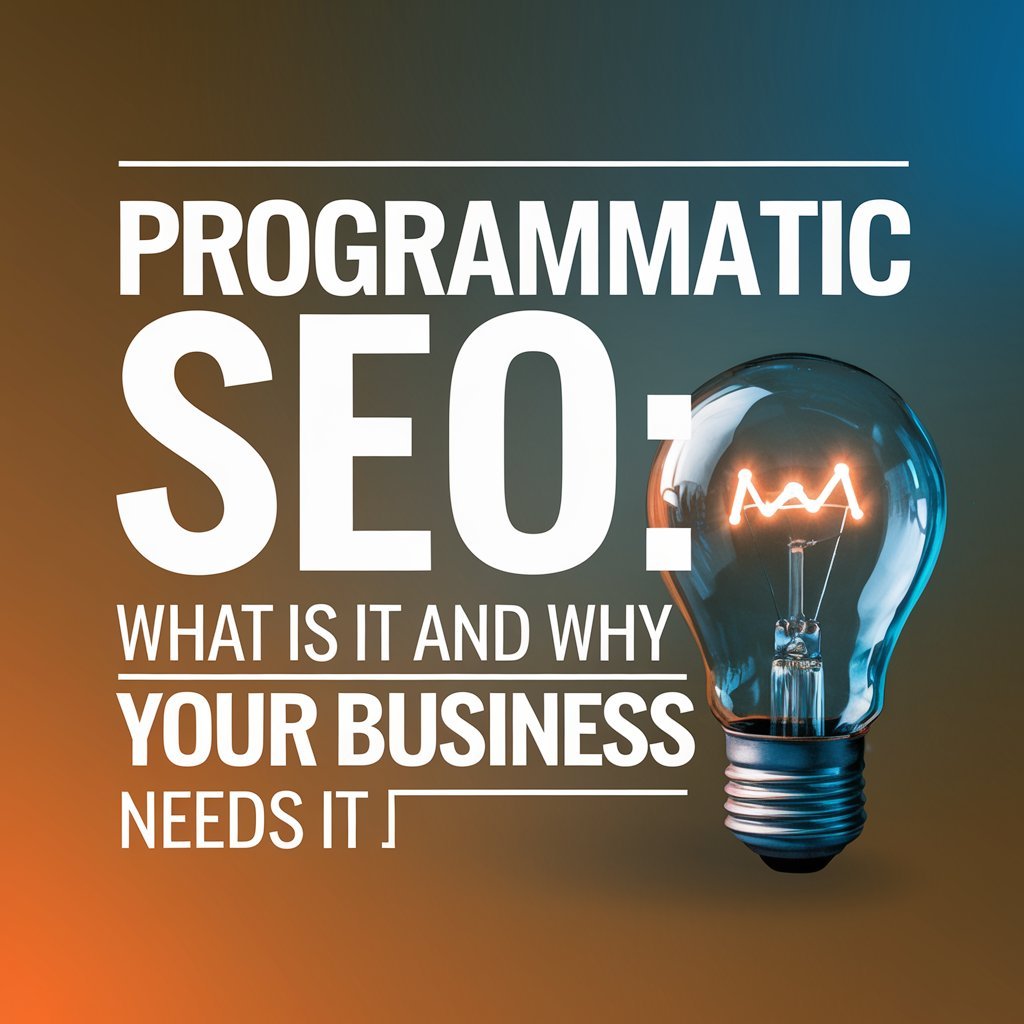As search engines have become more advanced and user behavior has evolved, ranking at the top of search results through manual SEO efforts has become increasingly difficult. The answer? Programmatic SEO – a data-driven approach that utilizes automation, machine learning, and analytics to boost your website’s performance.
In this article, we’ll explore:
- What Is Programmatic SEO?
- Benefits of Programmatic SEO
- Real-World Examples of Programmatic SEO
- How to Create Programmatic SEO Pages
- Drawbacks of Programmatic SEO
- Why Technical SEO Services Are Important for Your Business
What Is Programmatic SEO?
Before diving into programmatic SEO, let’s first define “traditional” SEO. Search Engine Optimization (SEO) is a method used to improve a website’s visibility on search engines like Google, Bing, and Yahoo. It involves optimizing on-page content for keywords related to your products or services and building backlinks to improve your ranking.
Defining Programmatic SEO
Programmatic SEO takes SEO to the next level by automating the process. Instead of manually creating pages for each keyword or search query, programmatic SEO tools allow you to automatically generate pages. This means you can create numerous landing pages that target specific keywords or variations all at once.
By using programmatic SEO, your website can quickly rank higher in search engine results for various search terms, helping you reach more potential customers faster and with less manual effort.
Benefits of Programmatic SEO
Programmatic SEO can help your business remain competitive online by improving your rankings and increasing organic search traffic. With programmatic SEO, your website benefits from:
- Automation of time-consuming tasks: Tasks like updating pages based on algorithm changes are done automatically.
- Data-driven insights: Analyze performance and adjust strategies based on real-time data.
- Faster response to trends: Quickly create pages tailored to changing market needs.
- Targeted content generation: Produce relevant content for specific search queries.
- Link-building opportunities: Strengthen your SEO score by building quality backlinks.
- Competitor analysis: Gain insights into your competition’s search engine performance.
Programmatic SEO tools save both time and resources, making it a cost-effective solution for businesses looking to improve their online presence.
Real-World Examples of Programmatic SEO
Here are two examples of how companies have successfully used programmatic SEO:
1. Zapier
Zapier’s programmatic SEO strategy has been crucial to its success. By creating individual pages for each app integration, Zapier ensures users can easily find the exact solutions they are searching for. For instance, a search for “Google Sheets integrations” often ranks Zapier as one of the top results.
2. Tripadvisor
Tripadvisor uses programmatic SEO to generate city-specific pages for users searching for the best things to do in different locations. For example, when searching “best things to do in Paris,” Tripadvisor consistently appears at the top. These pages are automatically generated, allowing Tripadvisor to rank highly for various city-based search queries.
How To Create Programmatic SEO Pages
Want to try programmatic SEO for your website? Here’s a step-by-step guide:
Step 1: Conduct Keyword Research
Start by identifying the most important keywords for your business. Focus on a mix of head terms (short and broad keywords), modifiers (adding specific terms to your keywords), and long-tail keywords (more detailed search phrases with higher conversion rates).
Step 2: Design Page Templates
Design a template for your content that includes all necessary elements, such as titles, headers, and call-to-actions. Ensure your template addresses user intent and incorporates your target keywords.
Step 3: Collect Data
Gather data to populate your pages. This could be from scraping websites, manually entering information, or using user-generated content like reviews.
Step 4: Build a Content Database
Compile your data into a database. This allows you to organize your content by keyword, location, or other relevant factors.
Step 5: Create Pages Using a CMS
Use a content management system (CMS) to generate your pages automatically. Headless CMS platforms like Contentful can make it easier to manage and deploy your pages.
Step 6: Integrate Database with Website
Connect your database to your website using tools like APIs or third-party software like Zapier. This ensures your pages are dynamically created and updated without needing manual intervention.
Step 7: Optimize for SEO
Once your pages are live, ensure they are optimized for SEO by including proper meta tags, improving page load speed, and adding structured data markup.
Step 8: Regular Testing and Updates
Continue monitoring your pages to ensure they remain relevant and optimized for search engines. Make adjustments as needed to improve performance.
The Drawbacks of Programmatic SEO
While programmatic SEO offers many benefits, it’s not without its challenges:
- Duplicate content: Using the same template for multiple pages can lead to duplicate content issues. Ensure each page offers unique value to avoid this.
- Indexing problems: Google may not index all pages if they are created in bulk. Focus on building internal and external links to speed up the indexing process.
- Google penalties: Automatically generated content can be penalized if it doesn’t provide value to users. Avoid thin content by focusing on quality and user experience.
Why Technical SEO Services Are Important
To ensure your programmatic SEO efforts are effective, it’s crucial to partner with a technical SEO provider like ITechGloble. They can help with everything from conducting SEO audits to optimizing your website for better rankings. With their expertise, you can ensure your website stays competitive in search engine results, driving more traffic and improving overall performance.
With programmatic SEO, your business can quickly scale content production, increase traffic, and stay ahead of the competition. However, it’s essential to have the right tools and strategies in place, or to work with an experienced technical SEO team like ITechGloble to get the best results.
For a technical SEO audit or more information on how to improve your website’s performance, contact ITechGloble today









